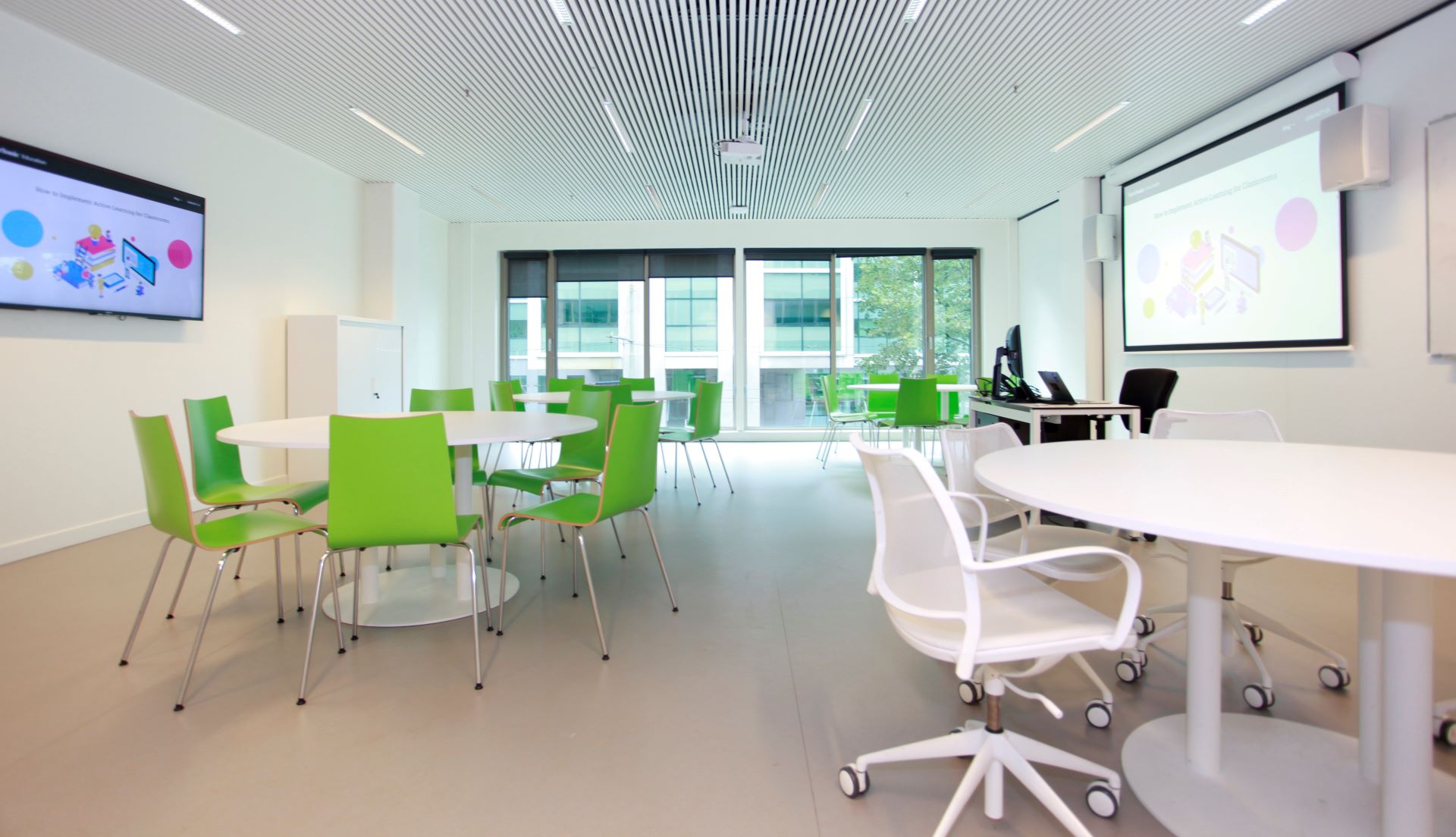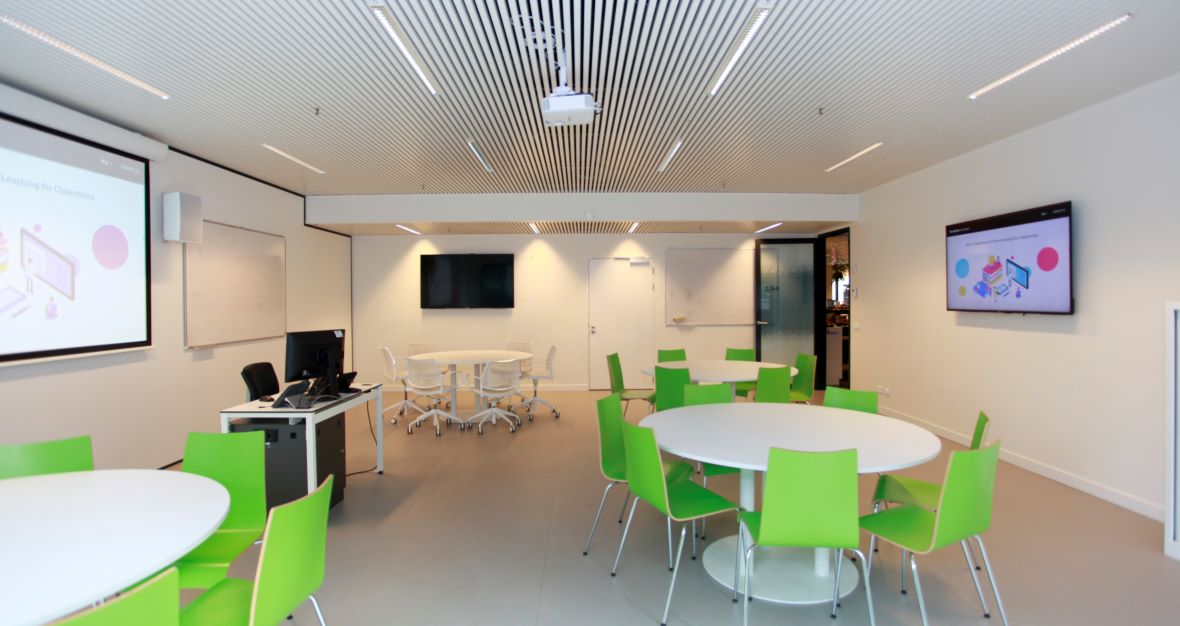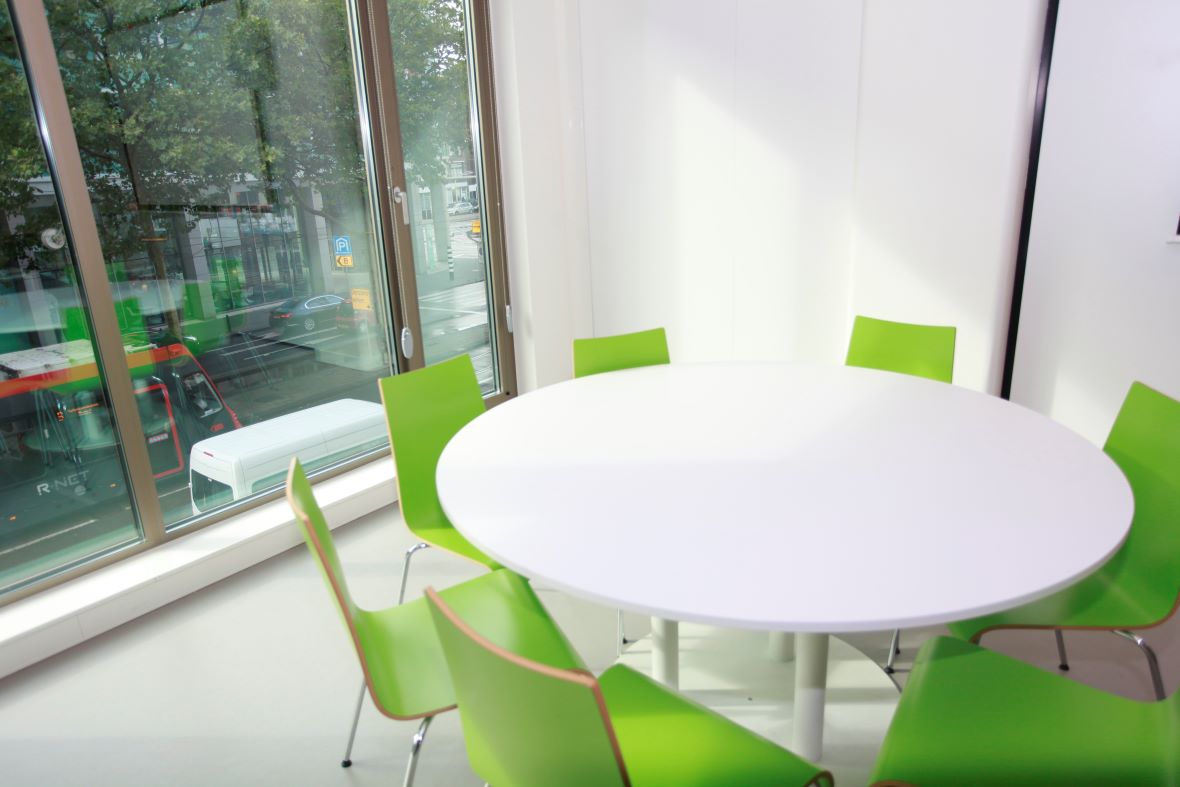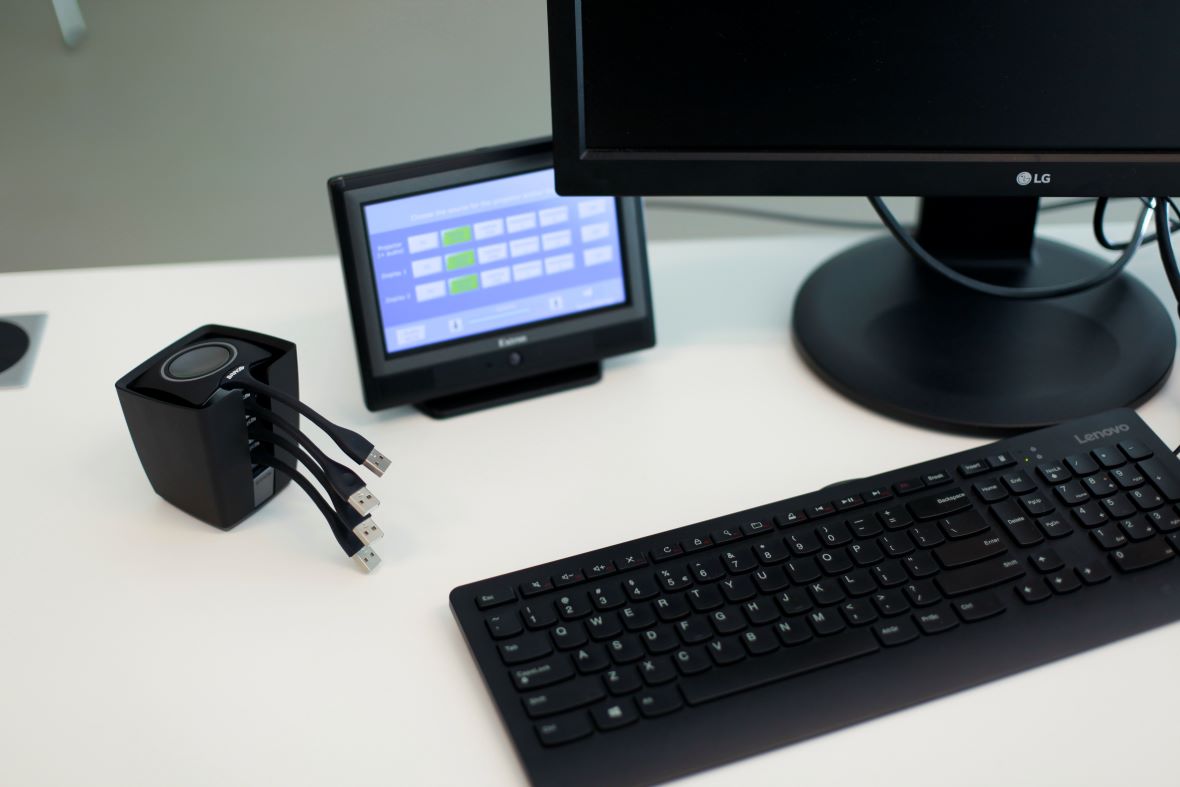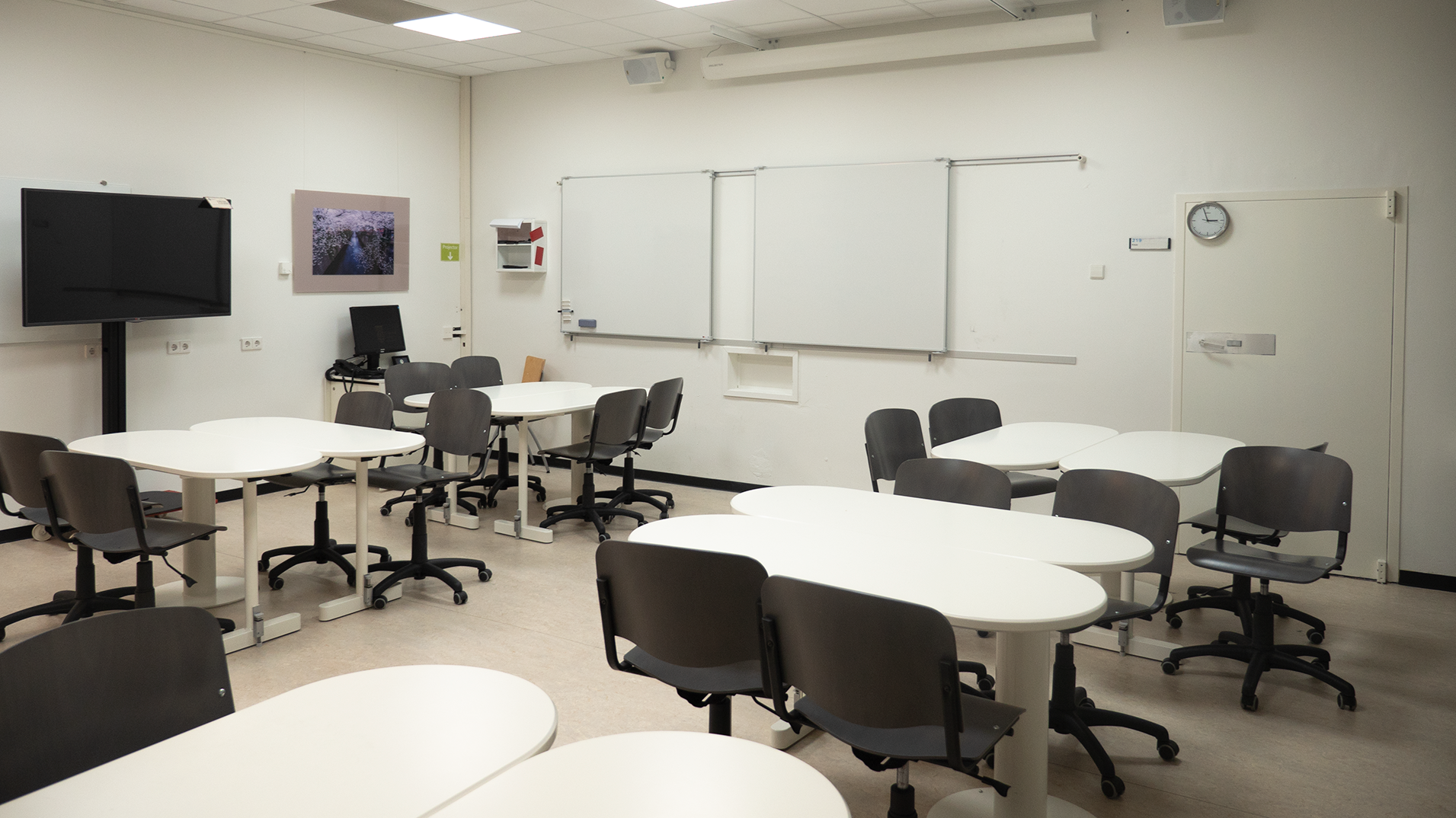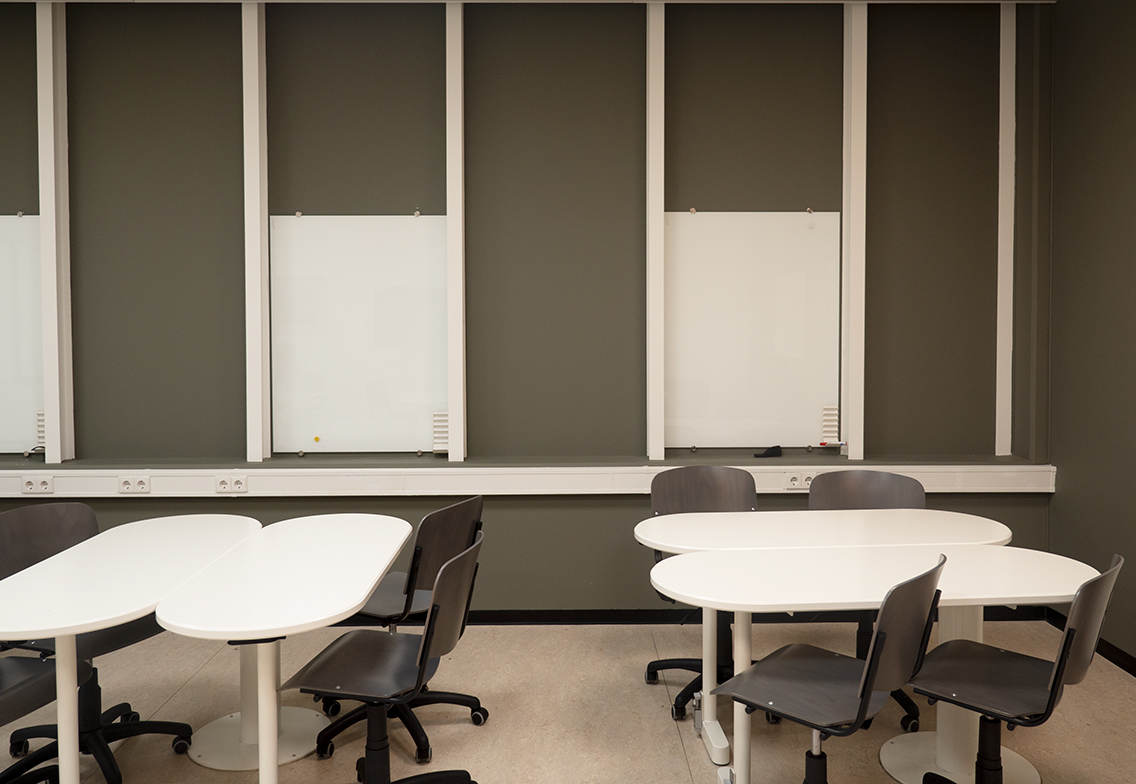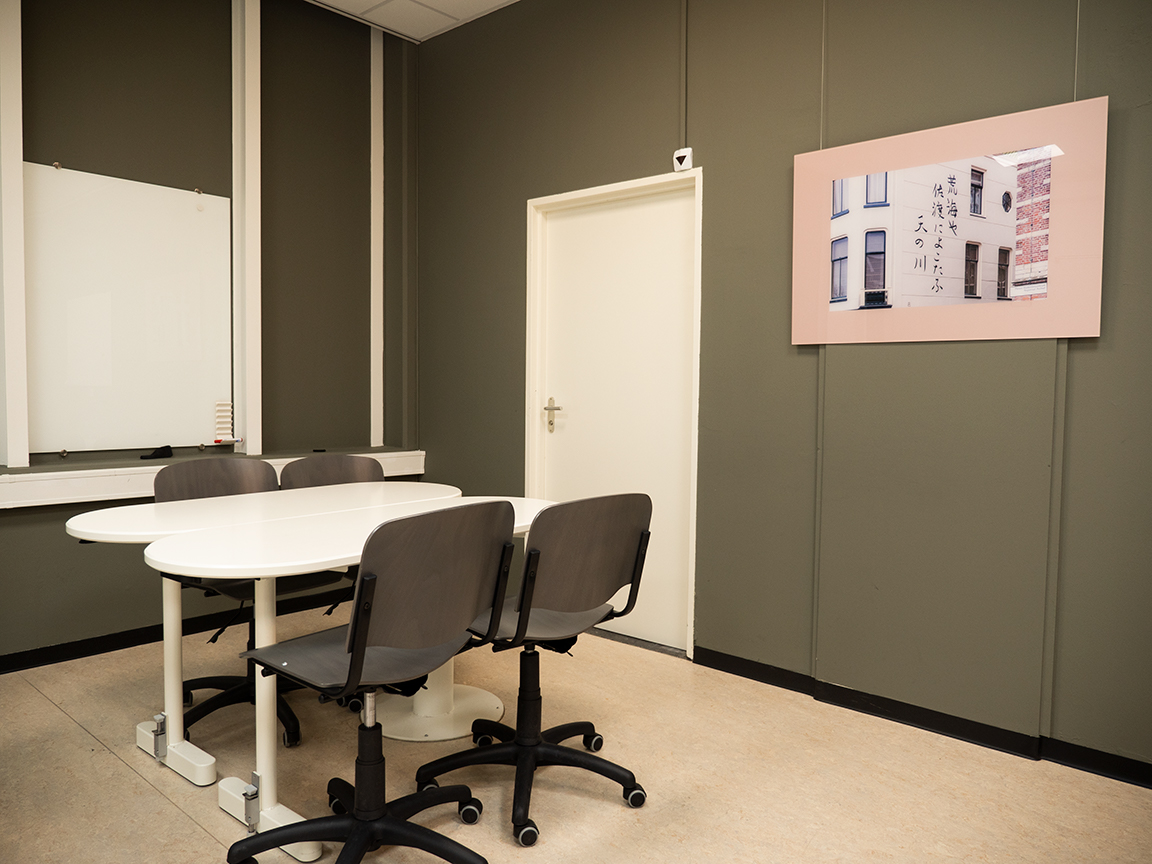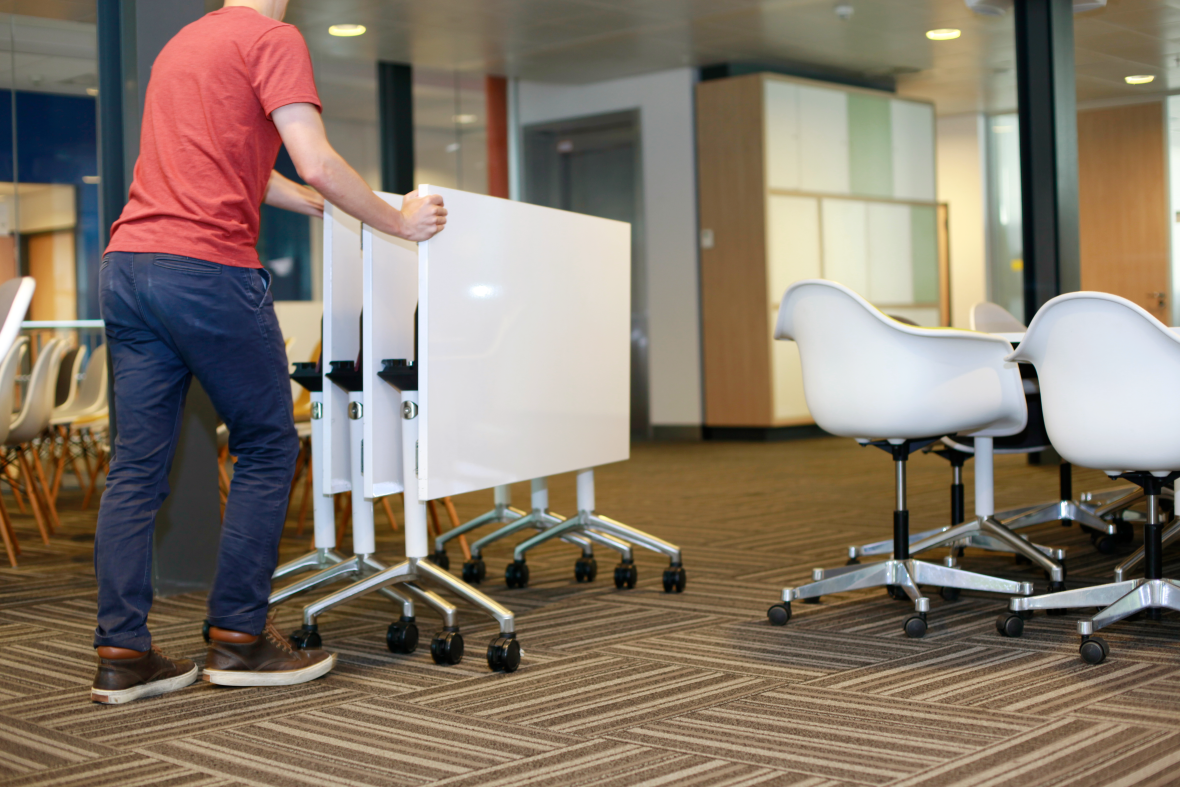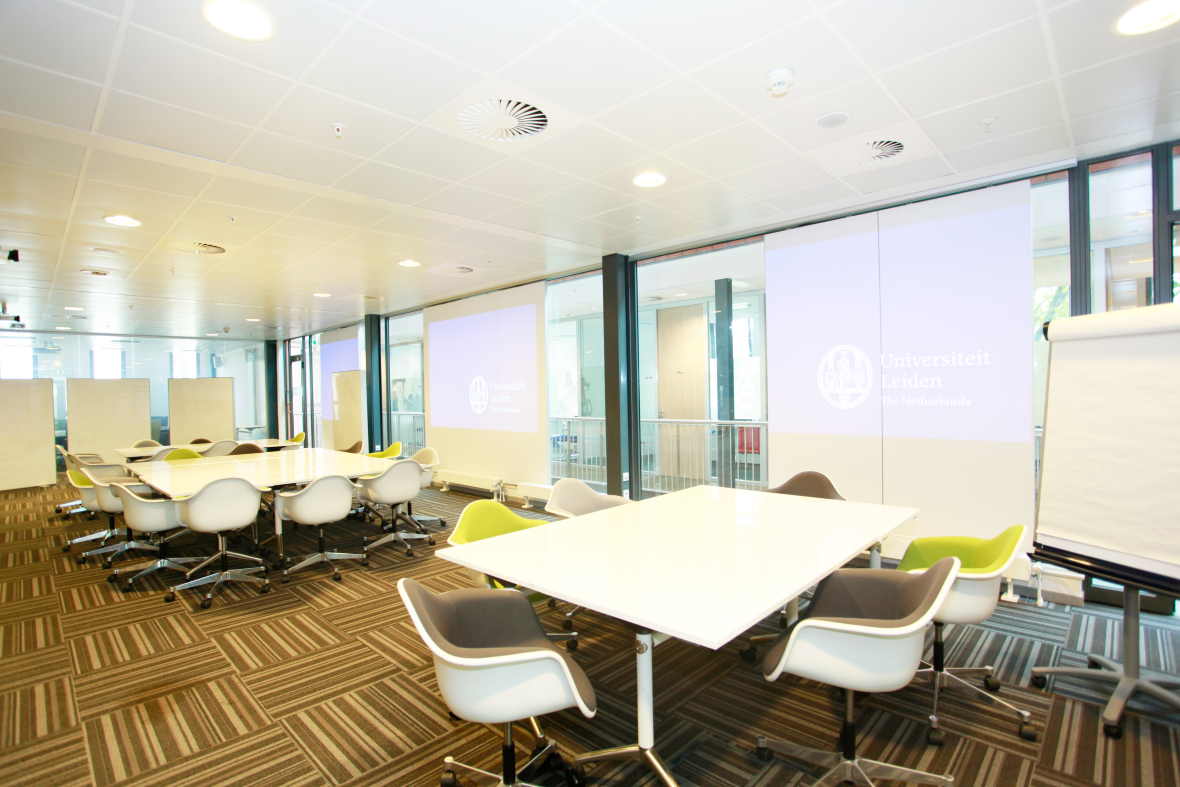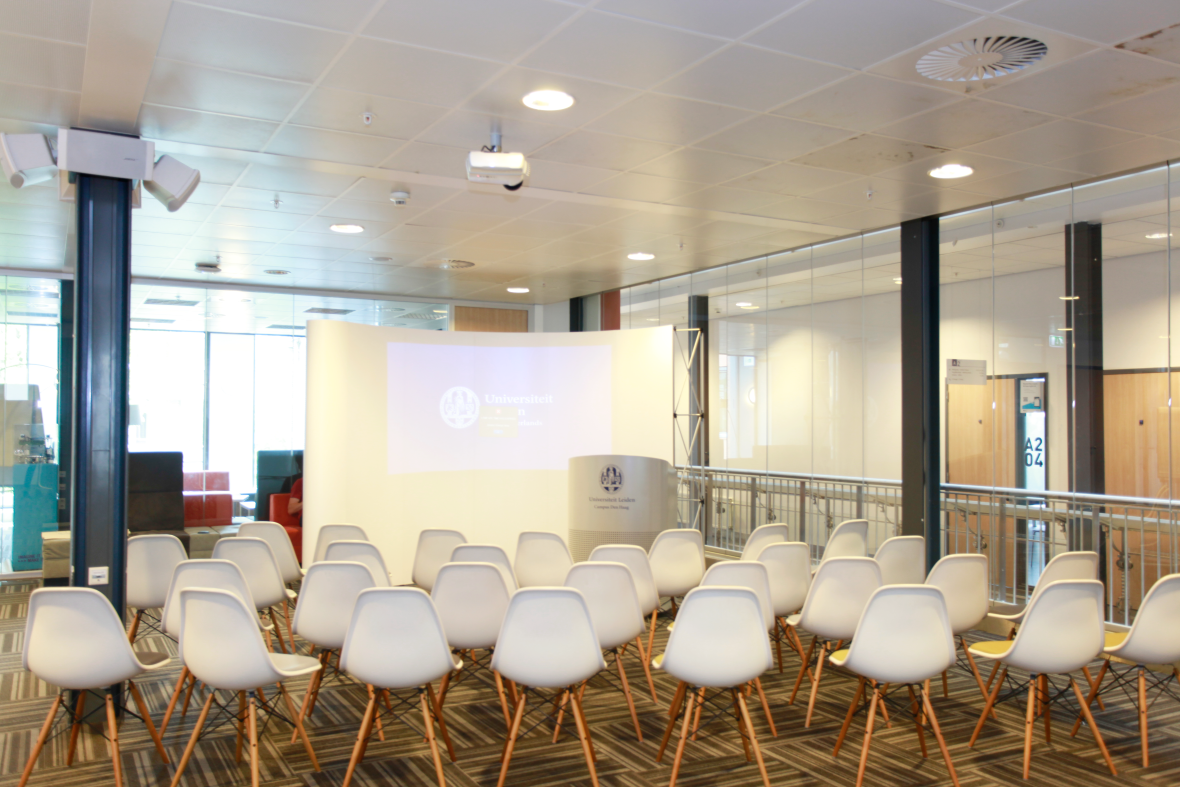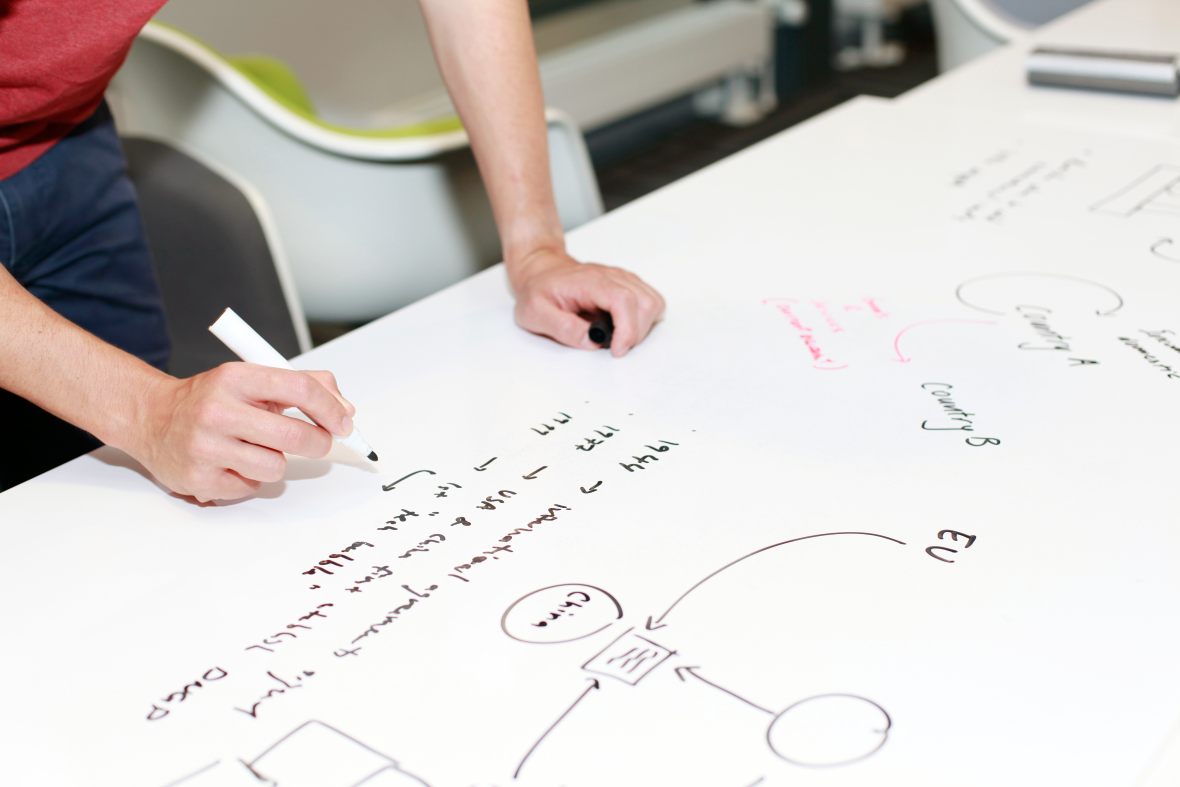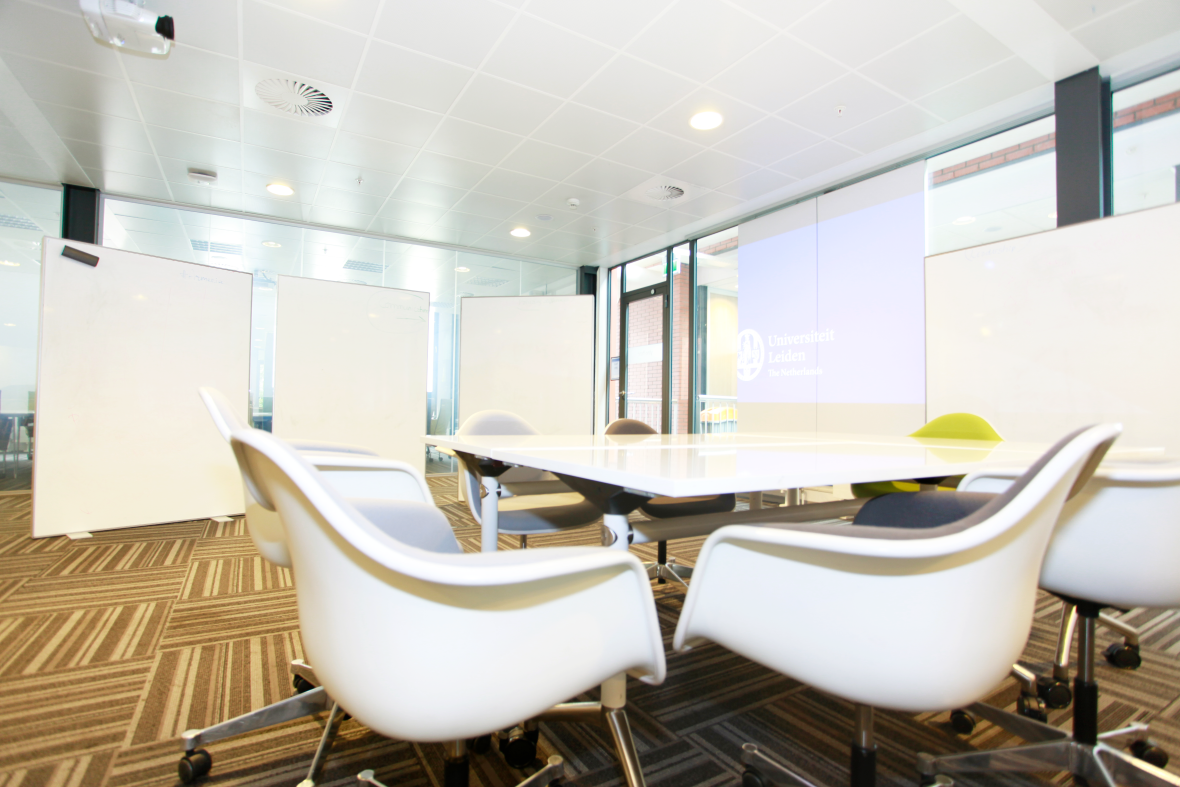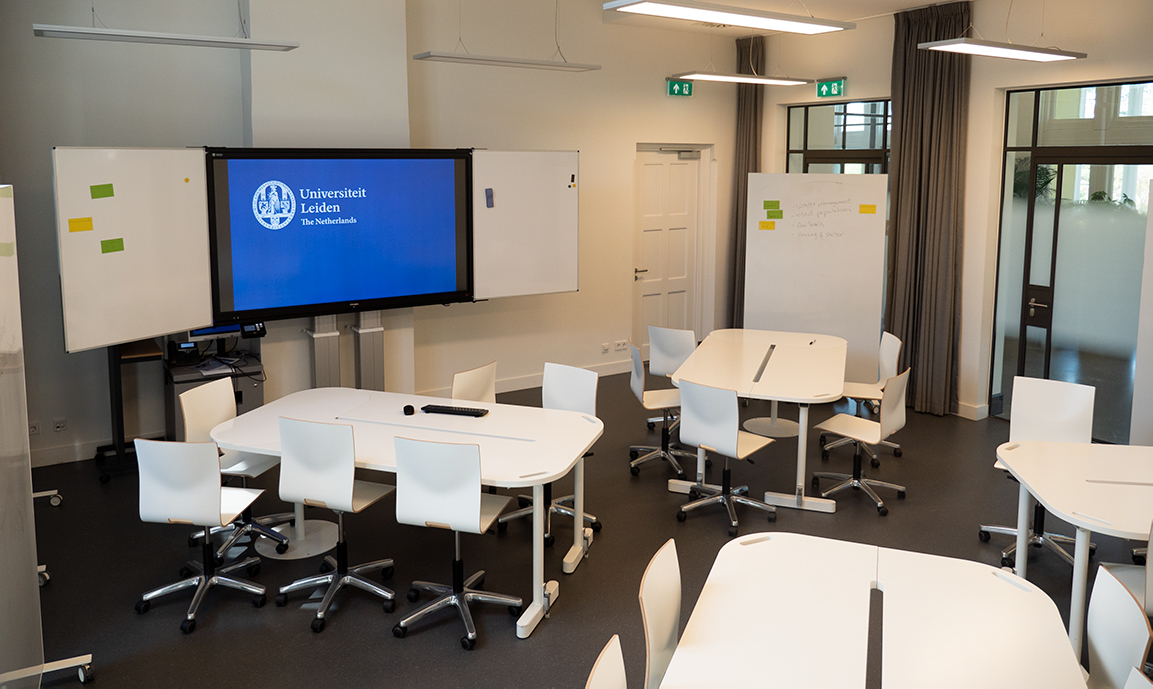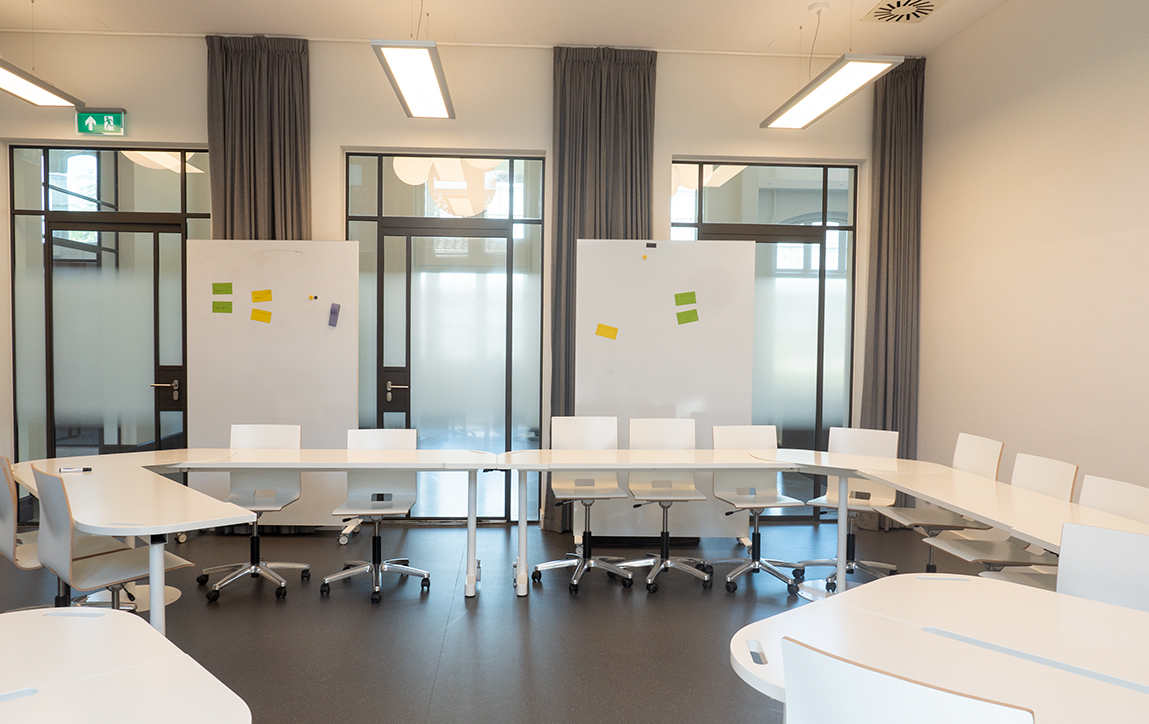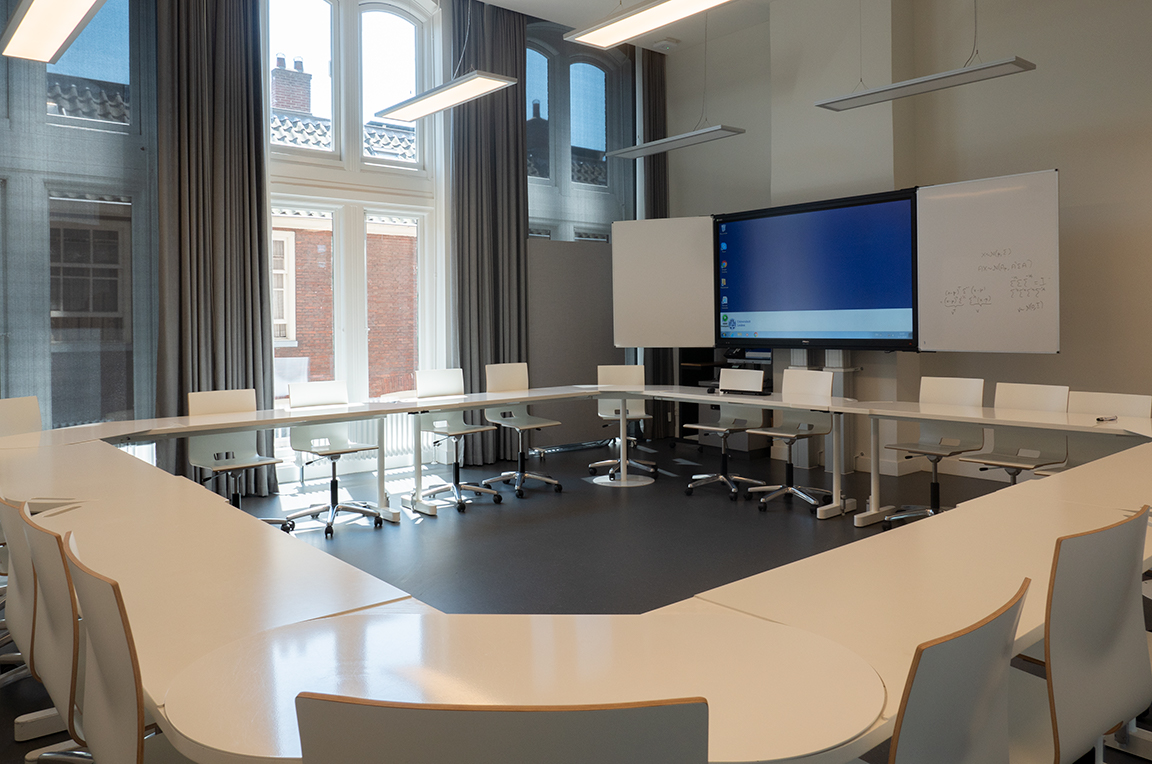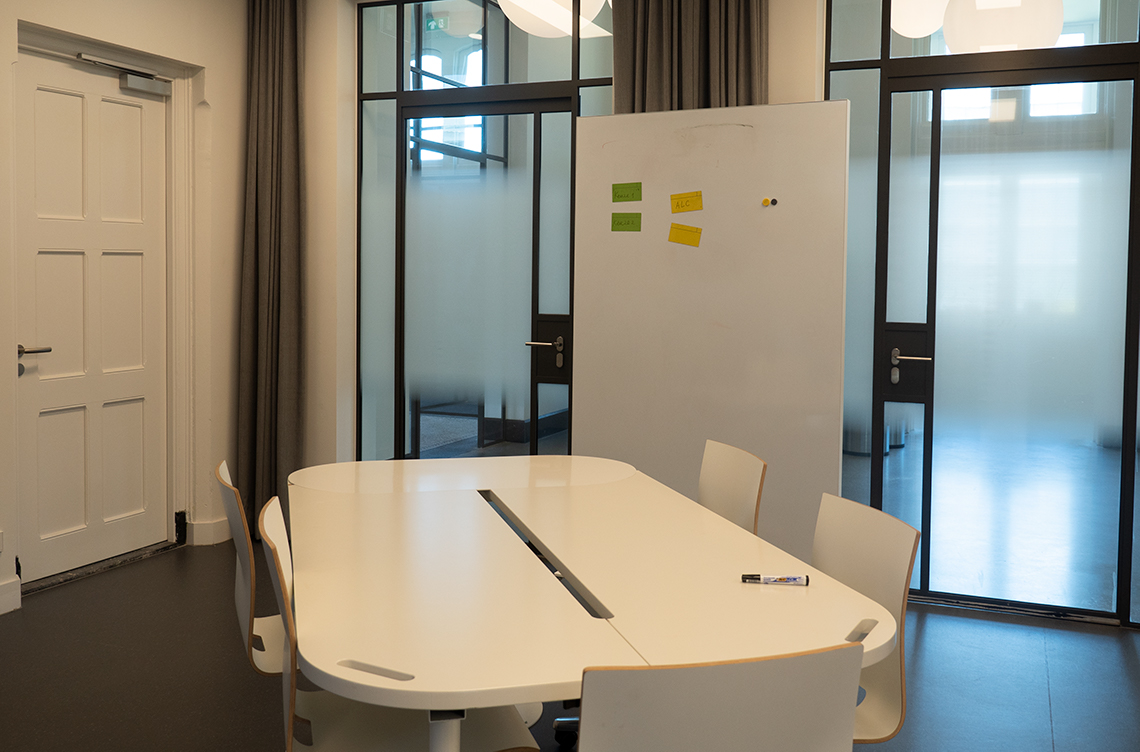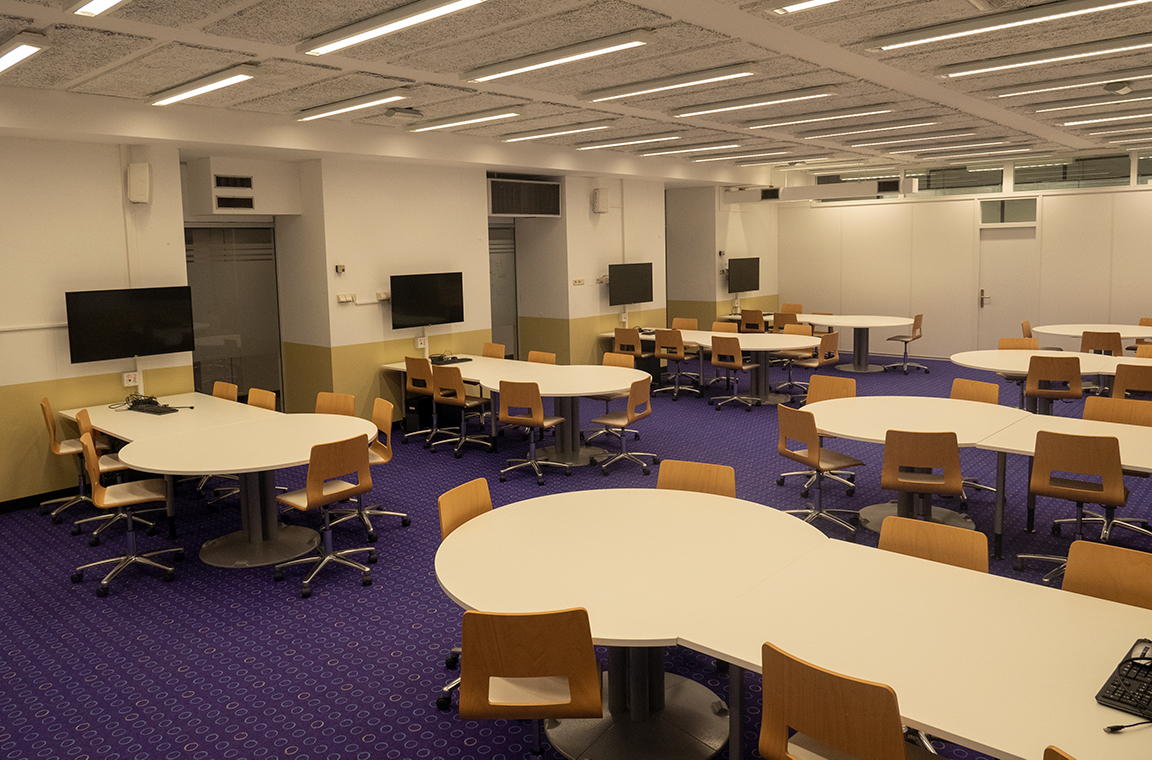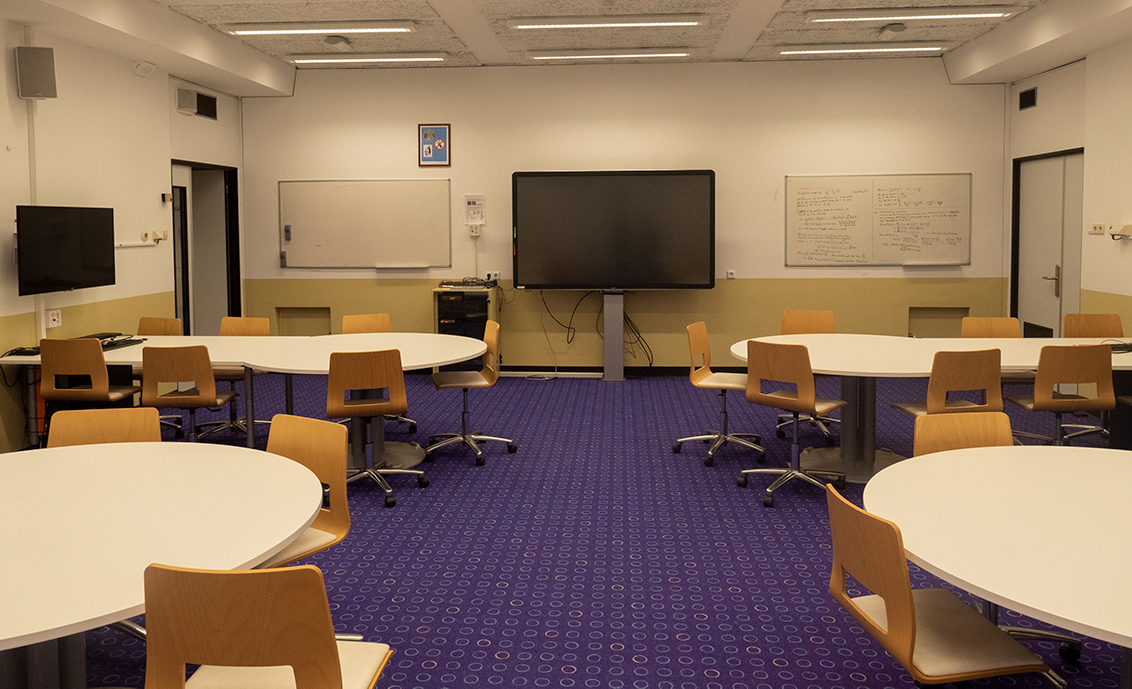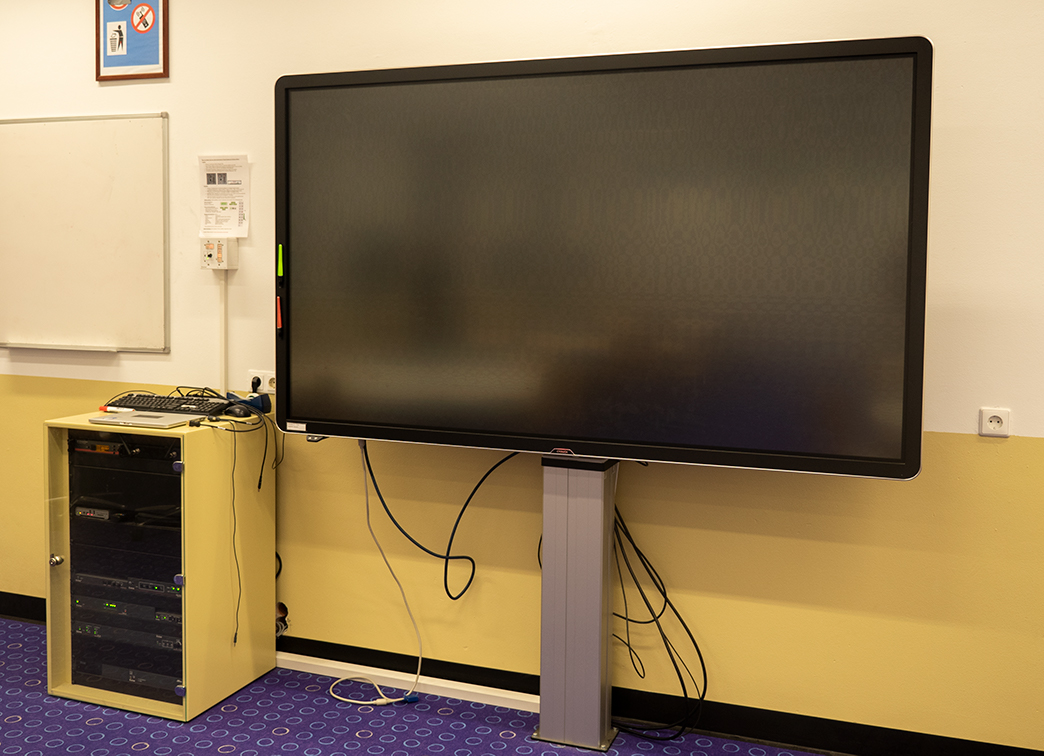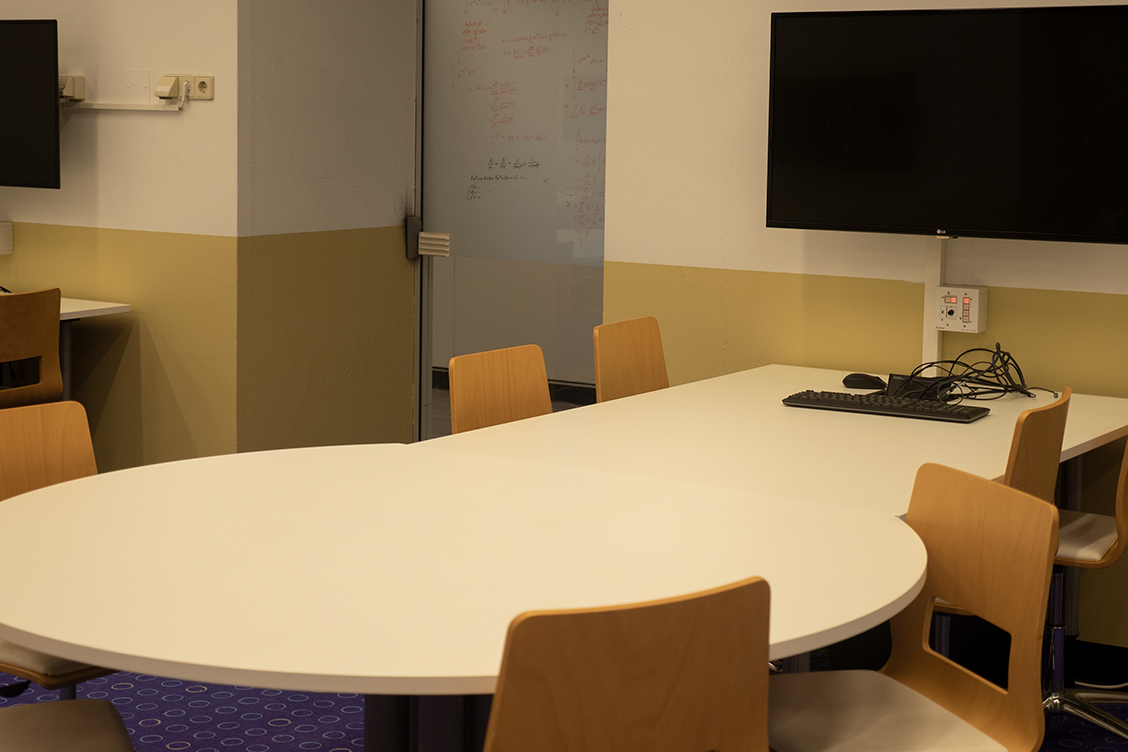Spaces for Active Teaching and Learning (SALT)
Here you will find an overview of the Spaces for Active Teaching and Learning already implemented at Leiden University and LUMC. These rooms vary in size, location, material affordances, and technological affordances, and thus vary in the forms of pedagogy they best support. You can use this site as a guide to see other existing rooms in the various faculties, where information about their capacity, year of creation, and booking process, can be found.
Our Spaces for Active Learning & Teaching
Wijnhaven 264
A 28-seat room on the 2nd floor of the Wijnhaven building, Campus Den Haag. Round tables seat 8, with rolling chairs. There are 3 display points in the room, which can wirelessly beam from 3 different devices. Windows facing the street double as writable surfaces.
Lipsius 217
Description:
A 24 person classroom on the 2nd floor of Lipsius. Rolling, flexible furniture and 5 writable surfaces supports small groupwork. A rolling, wired TV-monitor can be used to display student devices (via HDMI). Bookable through ZRS.
LUMC, Collegezaal 4
Description:
A 90+ seat room in the LUMC Main Building. Rolling, flexible, tables on a carpetted floor allows for the quiet re-arrangement of the room to support teaching in groups of many size. Nearly 3 full walls are covered in magnetized, writable surfaces, and there are hinged TVs on the walls which can be beamed to wirelessly (via ClickShare). The room is also eqipped with a motion-tracking camera mounted on the ceiling (for recording presentations), and features a 3D projector.
Photos of the room to come!
Can you give us more information about this room?
We are looking for more information about this room, including its square metres, please get in touch. Are you a teacher in this room? We'd love to hear your best & worst experiences!
Contact Us (opens mail)Schouwburgstraat, The Living Lab
A large, 64+ person space with multiple working zones in the Schouwburgstraat building, Den Haag. Wheelable chairs and tables and multiple movable whiteboards allow group working in various sizes. Windows and tables are additional writing surfaces. There are 4 projection points which allow different wireless casting (Clickshare), cast to retractable screens. Bookable through ZRS.
PJ Veth 0.06
Description
A 24 person classroom on the ground floor of PJ Vethgebouw. Rolling, flexible furniture and 5+ writable surfaces supports small groupwork. Furniture is interlocking, supporting multiple arrangments. Features a smartboard TV monitor. Bookable through ZRS.
Studio Classroom, Huygens 111
Description
A 64 person classroom in the Hugyens building. Fixed furniture set up for 8 small groups, each with a monitor and writing surface nearby. Features a smartboard TV monitor at the front of the room. Not bookable through ZRS.
Yellow Lab, Pieter de la Court SA37
Help us document this room.
Join on the 14th of November to see this room in person, and hear how some ideas for how it can be used by FSW associate professor Mark Westmoreland.
Active Learning Network - November meetingWhat is a Space for Active Learning & Teaching?
As a teacher, you never have full control over your students' learning outcomes. Students are individuals, whose learning ability is influenced by myriad factors both tangible, like the height of a desk, and intangible, like classroom culture, or sense of self-efficacy (Blackmore, et. al.). Spaces for Active Learning and Teaching aim to tangibly encourage and afford teachers and students to create a learning environment which supports their shared learning objectives.
Active learning and teaching attempts to harmonise learning objectives, teaching methods, and facilities. In this light, every space can support active learning and teaching, if the facilities offer the necessary material and technological affordances. Indeed, the 'space' of active learning can be also understood as a cognitive, or even digital space (Oblinger, 2006). Such a perspective highlights that the accomplishment of active learning outcomes is entangled with "intangible" factors, including the culture around teaching, a teachers' sense of self-efficacy and preparedness to fail (Blackmore, et. al.).
However, in the context of an education institution, such spaces usually refer to the physical premeses in which teaching & learning occur. Within that frame of reference, certain spaces stimulate and encourage active learning methods of teaching more than other, less flexible spaces. One way to scope 'active learning spaces' from other spaces in which active learning may occur is to map the designated purpose of these spaces. By comparing how discipline-specific they are and how much flexibility the premeses allow, these spaces can be understood as primarily suitable for many disciplines, and flexible.

This site is designed to catalogue the rooms already realised at Leiden University and LUMC.
Do you have more information about these rooms? Please contact us (opens mail) so we can update the site.
If you are interested in finding more information about the rooms themselves, each room has a contact point attached. Are you interested in finding more about the development of such a room in your faculty or expertise centre? Join our Active Learning Network.


